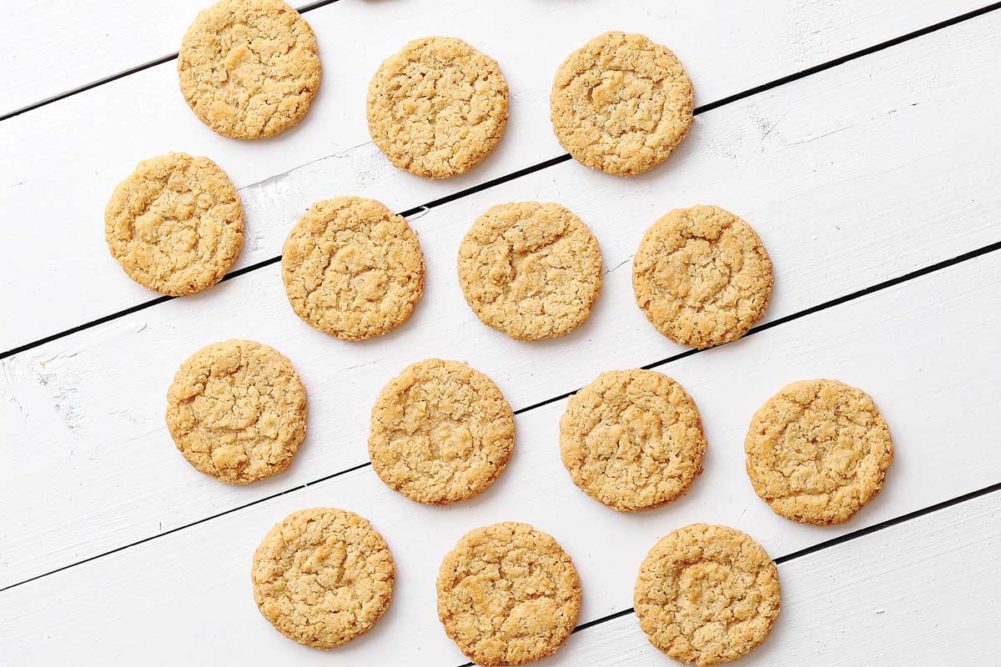Today’s food conversation may be dominated by cannabis, plants and proteins, but don’t think for a minute that gluten-free claims have waned. Rather, consumers expect products sporting gluten-free callouts in every aisle of the supermarket, much like organic and other free-from products.
“Not only is gluten free not going away, but grain-free, gluten-free baked goods are growing with more consumers seeking alternatives using seeds and nuts, as well as the many cauliflower and other vegetable-based ‘flours’ coming to the marketplace,” said Kara Nielsen, vice-president of trends and marketing, CCD Innovation.
Like every other space in the grocery aisle, gluten-free bakers are revisiting their formulations and simplifying them with cleaner label ingredients. Cargill, for example, has an array of plant-derived starches and texturizers to assist.
“Gluten-free native starches, such as maize, tapioca and potato, can help bakers solve common formulation challenges and produce a consumer-friendly label,” said Matt Gennrich, food scientist at Cargill. “We’re also seeing more emphasis on improving the nutrition profile of gluten-free products. Early gluten-free bakery products were sometimes loaded with sugars, fats and highly refined grains. Today bakers are boosting the protein content using pea and soy protein.”
Richard Mundy, manager, frozen, research and development, Dawn Foods, said that one of the biggest voids in gluten-free baked foods and, thus one of the biggest growth opportunities, is vegan formulations. That’s because most recipes use egg for strength and structure.
“Next year, we will be launching a full vegan range of products in Europe, and in North America, we already have a vegan donut in market,” he said.
There are a number of upcycled ingredients being ground into flour that may work in combination with other gluten-free flours to assist with delivering desirable taste and texture. Grapeseed flour is one such example.
Manufacturers of cold-pressed grapeseed oil previously discarded used seeds, but now the seeds may enter an upcycle stream where they are pulverized into flour. High in fiber and containing other nutrients, the seed flour takes on the flavor and color of the grape. When combined with other gluten-free ingredients, grapeseed flour contributes a slight nutty flavor and crisp texture to baked foods.
Planetarians produces defatted sunflower seed flour, which is a byproduct from sunflower oil extraction. The gluten-free flour is about 35% protein and 18% fiber, with a slightly nutty flavor.
Renewal Mill is all about upcycled ingredients. The company sells okara flour, which is a high-fiber, high-protein, gluten-free product made from the soybean pulp generated during soymilk production. It has a neutral flavor, described as slightly milky or nutty, and a light color.
Pea starch is a new addition to Ingredion’s extensive gluten-free ingredient toolbox.
“Pea starch is a byproduct obtained from the elaboration of pea protein isolate,” said Elena De La Peña, senior associate bakery and snack team, global applications, Ingredion. “It is non-G.M.O., vegan and allergen-free and has greater amylose content than regular corn, potato and tapioca starch. For that reason, pea starch provides increased volume, increased homogeneity of the crumb structure, great sliceability, freeze/thaw stability and a stable crumb firmness over time to gluten-free bread.”
The suggested usage level is 10% to 35% of the total bulk flour. Because it is a starch, it does not provide the off flavor and color traditionally associated with pulse flours and proteins, said Ms. De La Peña.
As bakers formulate gluten-free baked foods, it’s important to know the limitations and qualities of the most pervasive gluten-free ingredients. The latest innovations can also help them achieve improvements in texture and nutrition.
This article is an excerpt from the November 2019 issue of Baking & Snack. To read the entire feature on gluten-free ingredients, click here.






